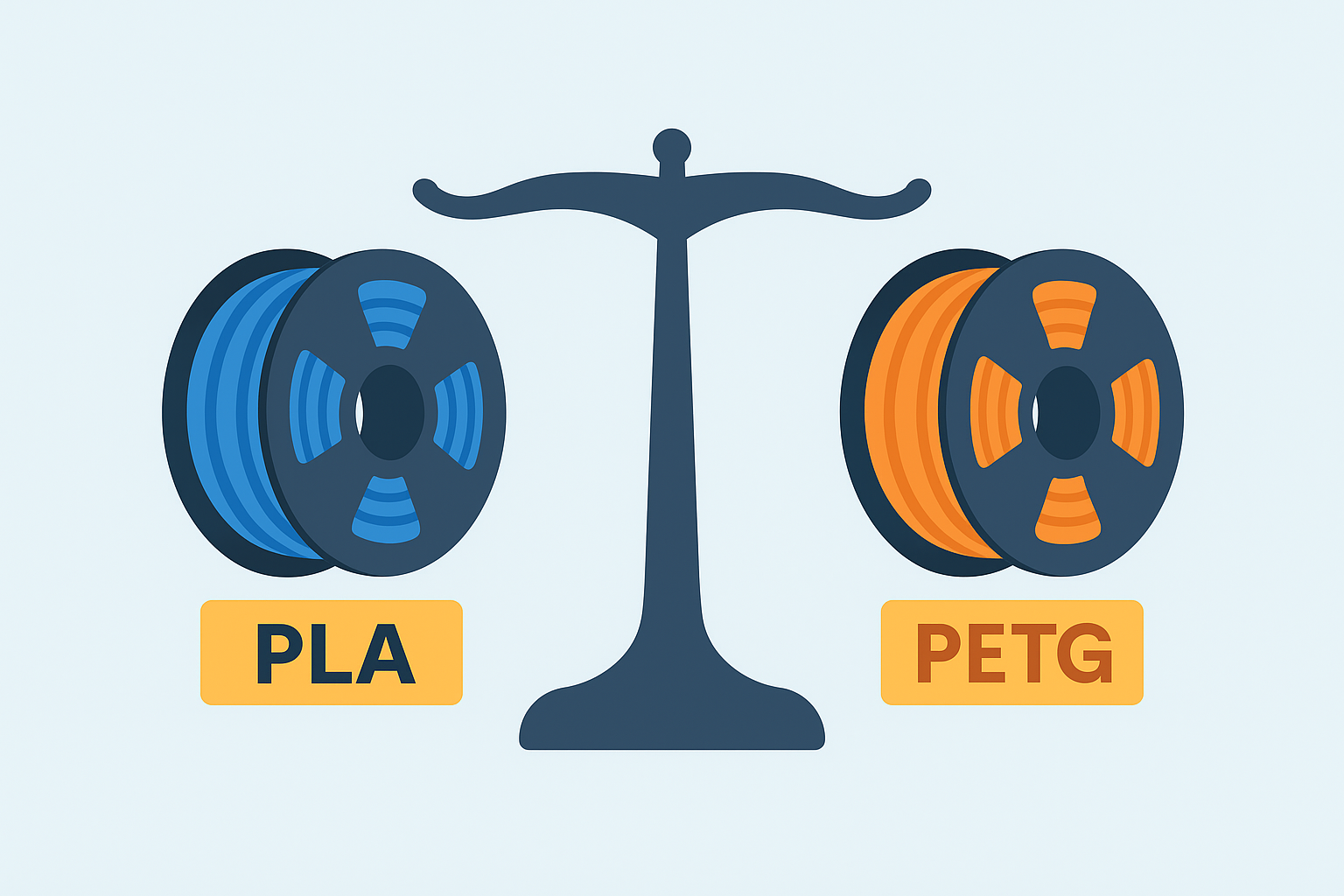PLA: The Popular Classic
PLA (polylactic acid) is one of the most widely used 3D printing materials. It's biodegradable, easy to print with, and comes in a wide range of colors and finishes. That makes it ideal for design prototypes, miniatures, holders, decorations, or any print that doesn’t need to endure mechanical stress or high temperatures.
Advantages of PLA
- Easy to print, even without a heated bed
- Excellent detail and smooth surface finish
- Lower cost compared to PETG
- Eco-friendly – made from renewable sources
What to watch out for
- Low heat resistance (softens around 60 °C)
- Brittle – prone to cracking under pressure or bending
- Not suitable for outdoor use (UV unstable)
PETG: When PLA Isn't Enough
PETG combines the best of PLA and ABS. It's stronger, more impact-resistant, and can withstand higher temperatures. It's suitable for mechanical parts, covers, brackets, or any technical print that needs durability – but it’s not recommended for long-term sun exposure.
Advantages of PETG
- High strength and flexibility
- Better heat resistance (up to 80–90 °C)
- Easier to print than ABS or ASA
- Less brittle than PLA
What to watch out for
- Somewhat trickier to print – better for experienced users
- Tends to string more during printing
- Slightly higher cost and longer print times
- For long-term outdoor use, ASA is recommended due to its UV stability
When to Choose Which?
- Need a nice-looking print with minimal hassle? PLA is a great choice – fast, affordable, and reliable.
- Need something more functional and durable? PETG is a go-to for more demanding projects.
Real-World Experience (László 3D)
At our print farm, we mainly use PLA for colorful or decorative prints – keychains, stands, or prototypes. We choose PETG for applications that require more toughness and strength – such as covers, technical parts, or prints under mechanical stress. If a customer needs something for use in a car or under sunlight, we recommend ASA instead, thanks to its proven UV resistance.
Still Not Sure?
Contact us and we’ll help you choose. Or try our online 3D print cost calculator – each material includes a brief overview and recommendations.

